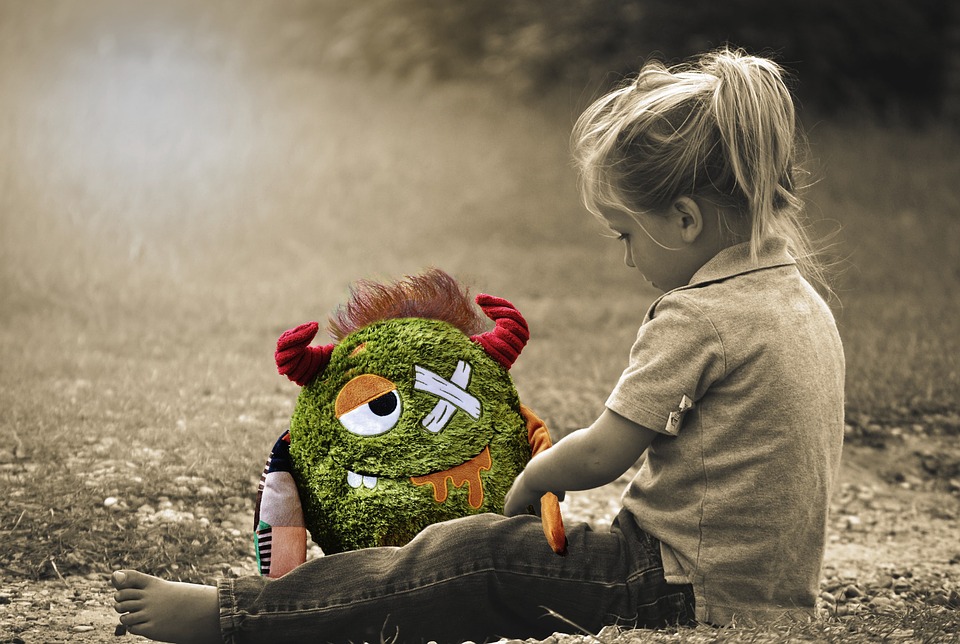A new study, published in The Journal of Clinical Psychiatry, investigates the presence of posttraumatic stress symptomatology in children involved in motor vehicle collisions up to 3 years after the accident. The results of the longitudinal study with data from over 100 children indicate that parents identify symptoms at much lower rates than their children, and that parental posttraumatic stress may be related to their children’s symptoms.
“When people talk about PTSD they often think about soldiers returning from war zones. But children who experience traumatic events such as car accidents, assaults, and natural disasters are also at risk of developing post-traumatic stress disorder,” stated the lead author, Richard Meiser-Stedman from the University of East Anglia in the UK, in a recent press release.

Not much is known about the course of posttraumatic stress in young children over the long-term, especially for single-trauma events such as a motor vehicle accident. However, more attention is being paid to posttraumatic stress disorder (PTSD) in youth. This interest was bolstered by the development of an alternative algorithm that can be used to diagnose PTSD in children (PTSD-AA) and resulted in a new diagnosis in the DSM-5, preschool PTSD, which can be used to diagnose children up to age 6. As with the diagnostic criteria for PTSD in older children and adults, children must exhibit re-experiencing, avoidance, hyperarousal, and clinically significant distress in order to be diagnosed with preschool PTSD or receive a positive screening on the PTSD-AA.
The researchers identify four goals of the study: (a) gather longitudinal data on the prevalence of PTSD/PTSD-AA in children aged 2-10 after a single traumatic event, (b) better understand how parents’ report of PTSD symptoms compares to the child’s report, (c) identify early diagnostic markers for the development of PTSD/PTSD-AA such as acute stress disorder, and (d) identify risk factors in young children for developing PTSD/PTSD-AA.
Diagnostic interviews were conducted with parents of children who were involved in a motor vehicle accident and, if the children were 7 years or older, with the children themselves. Interviews were conducted at 2-4 weeks, 6 months, and 3 years post-accident. The researchers used diagnostic criteria for PTSD from the DSM-IV and the PTSD-AA. Information on parental posttraumatic stress symptoms related to the motor vehicle accident was also collected.
The results suggest “that a significant minority continues to present with clinically significant PTSS [posttraumatic stress symptomatology], even at this long-term follow-up assessment. Reliance on parent report alone, however, yielded very few cases, regardless of diagnostic algorithm.” In fact, using parent report alone, only 2.8% of children met criteria for PTSD-AA. But, when parent and child reports were combined, 17.9% of children met criteria for PTSD-AA. The authors report that “parent-child agreement at T3 [3-year follow up] was no better than chance at the level of diagnosis.”
More than twice as many children met criteria for PTSD-AA than the DSM-IV criteria for PTSD. According to the researchers, “These findings also emphasize the importance of using a developmentally appropriate tool for diagnosing PTSD in children (eg, DSM-5 preschool child PTSD).”
The researchers also report that parents’ ratings of their own posttraumatic stress symptomatology at 2-4 weeks after the motor vehicle accident predicted their child’s level of posttraumatic stress, even at the 3-year follow-up. The authors note that it is unclear whether children’s symptoms impacted parents’ posttraumatic stress, parents’ reactions impacted their children’s symptoms, or if there is a bidirectional effect, where parent and child reactions negatively impact each other.
The authors identify both strengths and limitations of diagnostic tools, stating, “With respect to the early identification of children at risk of a chronic reaction to a traumatic stressor, diagnostic tools (particularly child-report PTSD-AA) have some predictive ability. However, the utility of such constructs should not be overstated; there is considerable natural recovery over time, as well as some cases who met diagnostic threshold at a 3-year follow-up (T3) but who did not do so at previous assessments.”
The researchers conclude that parent reports alone may be insufficient for identifying children exhibiting PTSD symptoms. They also suggest that children would benefit from interventions that provide more support to parents after their child experiences a trauma, explaining “these data speak to the need to consider trauma-exposed parent-child dyads from the outset, rather than young children in isolation.”
****
Meiser-Stedman, R., Smith, P., Yule, W., Glucksman, E., & Dalgleish, T. (2016). Posttraumatic stress disorder in young children 3 years posttrauma: Prevalence and longitudinal predictors. The Journal of Clinical Psychiatry. Advance online publication. doi:10.4088/JCP.15m10002 (Abstract)















Thats nice but any program of identifying any mental stuff in kids just puts more kids at risk for psychiatric drugging.
Report comment
Of course kids can develop PTSD and have long term affects well into Adult hood but as soon as you start diagnosing and using the DSM it puts children at risk of even greater harm with stigmatizing labels, drugs, and cold uncaring psychiatrists.
I know because many of my issues are a result of my childhood and the mental health system only adds to the shame you already feel about yourself.
Report comment
Childhood PTSD caused my alcoholism. Drank at 9 Yo before the crap and all it did was make me feel dizzy and then sick. At 13 after the crap I went though when I took a few drinks one day and I felt better, I felt ALOT better, alcohol is the best thing ever, awesome… and it began.
At 9 there were no real crappy feelings for the alcohol to negate so I did not think much of it, at 13 there was.
Report comment
The psychiatric system, with its labels, suppressive drugs, institutions, other repressive “treatments”, and the accompanying stigmas, won’t help anything. If someone has been traumatized, pathologizing them will only add to their traumas. Psychiatry wants to pathologize everyone so they can label more and more people as being “mentally ill” and make more money off of them. People would be better off meditating or calling friends than going to shrinks. Psychiatric “treatments” are more about controlling people than helping them. The same goes for psychiatric labels.
Report comment
What Cat said, “Thats nice but any program of identifying any mental stuff in kids just puts more kids at risk for psychiatric drugging.”
Nomadic
Report comment